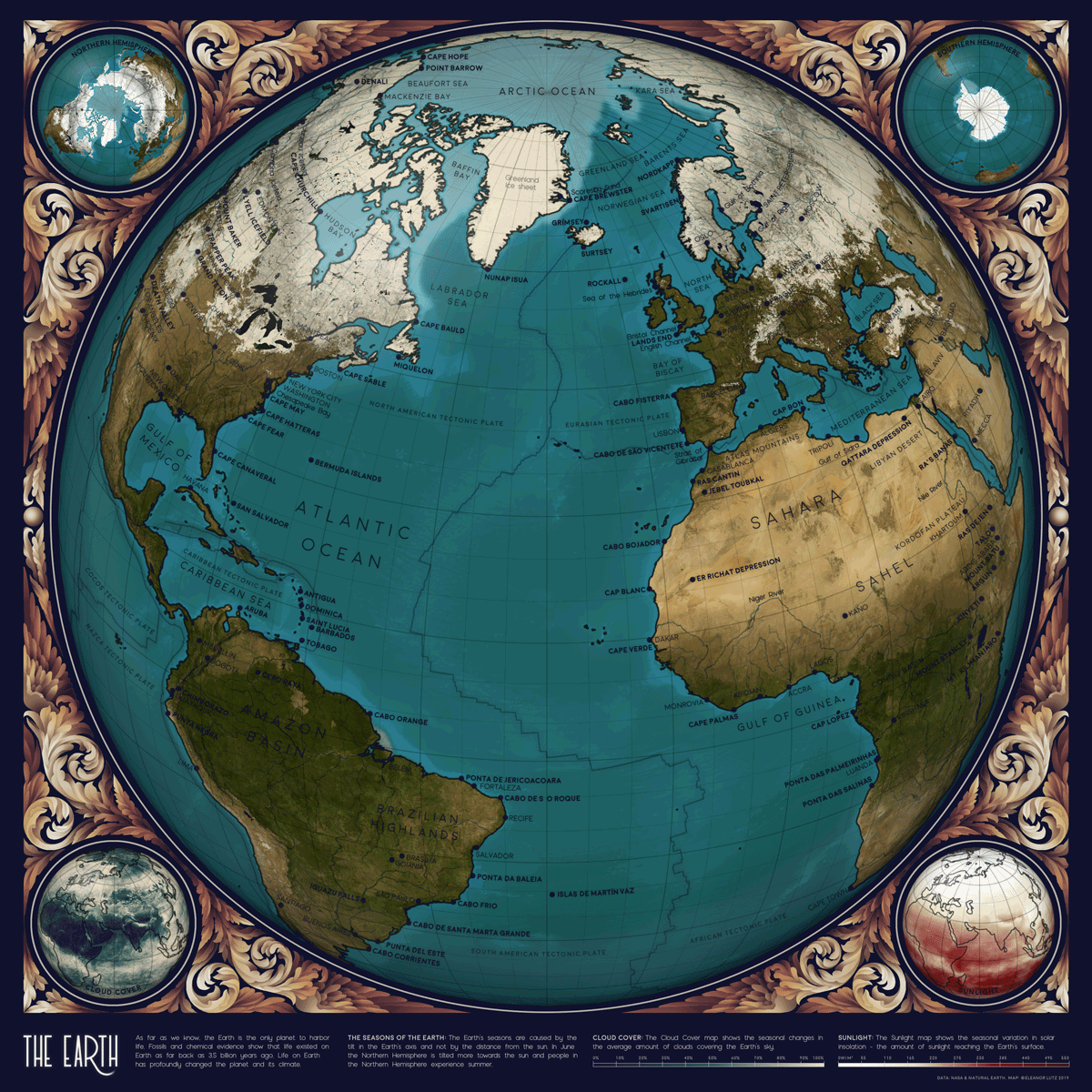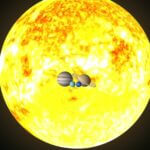Many people think that the seasons are determined by the Earth’s proximity to the Sun, but this is not true. The changing of the seasons is influenced by the Earth’s tilt, not its proximity to the Sun.
This animated map by Eleanor Lutz visualizes the seasons on Earth, showing how changes in temperature affect ice levels in the Arctic as well as vegetation in general. It also highlights the cloud cover and sunlight that each hemisphere receives throughout the year, with each frame in the animation representing a month of time.
Why is the Earth tilted?
Unlike some planets, which sit completely vertical and rotate perpendicularly, the Earth rotates about an axis of 23.5 degrees.
But why? The generally accepted theory in the scientific community is the hypothesis of a giant impact. According to this theory, a celestial object called Teia collided with Earth many years ago, when the planet was still forming. Not only did this collision knock the Earth back into its tilted position – some believe that the dust and debris from this collision eventually formed our Moon.
Since then, our planet has been rotating at a slight tilt (which itself is not fixed, since it “oscillates” in cycles), giving us different seasons throughout the year.
How does the tilt of the Earth affect our seasons?
As our planet revolves around the Sun, it is always tilted in the same direction. Because of its tilt, different hemispheres receive different amounts of sunlight at different times of the year.
In December, the Earth is technically closer to the Sun than in June or July. However, because the Northern Hemisphere is tilted away from the Sun in December, it is winter in that part of the planet.
The graph above, made by the Smithsonian Science and Education Center ( SSEC ), visualizes the Earth’s orbit throughout the year, showing when each hemisphere receives the most direct sunlight (and therefore experiences summer).
Impact of climate change
While our seasons have always been different, it is worth noting that climate change has affected our seasons and changed how much Arctic ice we lose each summer.
In the past, millions of miles of ice remained frozen during the summer months. In the 1980s, there were 3.8 million square miles of ice in July, about as much as Australia.
Over the years, Arctic sea ice has steadily declined. In July 2020, the ice cover was just 2.8 million square miles – a million less than it was four decades ago.
Some scientists predict that we could lose our summer sea ice completely by 2035, with devastating effects on Arctic wildlife and the indigenous people who live there.
#impact_of_climate_change #times_of_year
@webtrafficgury





